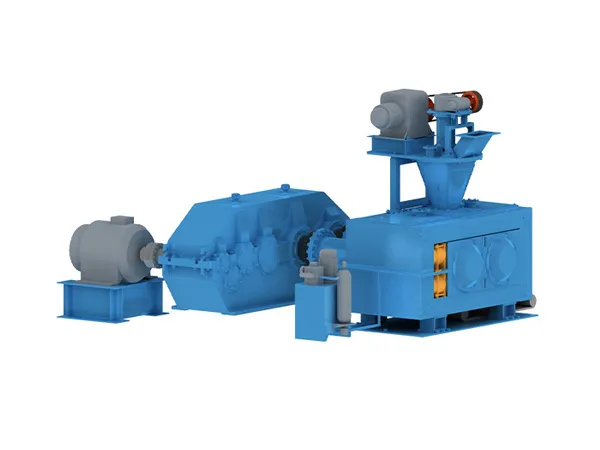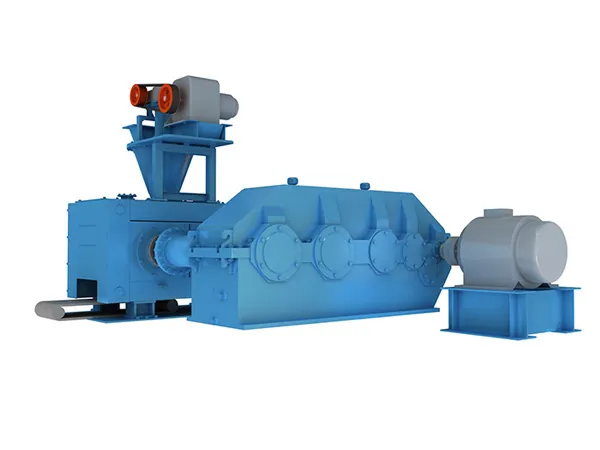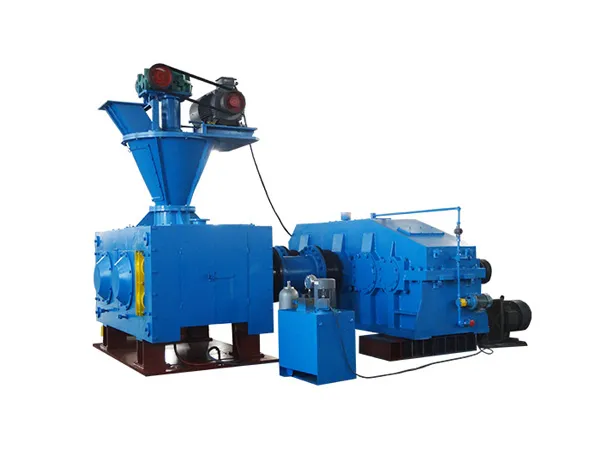

-
Products
-
Application


Briquetting machines play a vital role in converting biomass, metal chips, or other waste materials into compact, reusable briquettes. Over time, these machines may face operational challenges such as mechanical wear, hydraulic failure, or sensor malfunction, which can reduce productivity and increase downtime. Understanding the fundamentals of briquetting machine repair is essential for maintaining efficiency, extending equipment lifespan, and ensuring consistent briquette quality.

The most frequently worn parts in a briquetting machine are the propeller (screw auger), the sleeve (forming die/mold), and the heating coils/rings. Regular inspection and timely repair of these parts are crucial for efficient operation and quality briquettes.
Propeller (Screw Auger):
Problem: Wear, deformation, bending, or a non-smooth surface, especially at the tip and along the threads. This can lead to poor briquette formation, no briquettes, or inconsistent density.
Repair:
Welding and Polishing: If worn, use a wear-resistant electrode (diameter 5.0mm or above) to build up the worn areas. Preheat the propeller end to around 200°C before welding. The welding thickness should exceed the required thickness by 1-2mm.
Cooling: After welding, allow for natural cooling. Some methods suggest inserting the welded part into dry quicklime or plant ash to cool slowly.
Grinding/Polishing: Once cooled (below 50°C), grind and polish the surface using silicon wheels (or green silicon carbide wheels) to the specified size until it's smooth and the angle is correct. Ensure the R-angle at the root of the screw head is treated properly.
Coaxiality: Correct any deformation or bending to ensure the coaxiality of the propeller's tip.
Regular Replacement: Some recommend replacing the screw head after 1-2 days of operation, regardless of wear, to maintain optimal performance.
Sleeve (Forming Die/Mold):
Problem: Wear, rust spots, or large pits can lead to poor quality briquettes, no briquette formation, or issues with material discharge.
Repair:
Inspection: Periodically check the degree of wear.
Repairing Small Damage: For rust spots, timely repair is needed.
Replacement: If there are large pits or significant wear, the sleeve should be replaced to ensure proper briquette formation and quality. Ensure the new sleeve has a reasonable size and is durable.
Heating Coils/Rings:
Problem: Damaged heating rings, low power supply voltage, or incorrect coil models can lead to slow temperature rise, inability to reach the required temperature (e.g., 260-350°C), or unstable temperature. This directly affects briquette formation and quality.
Repair:
Check Voltage: Verify the power supply voltage is appropriate.
Replace Damaged Coils: Replace any damaged resistance heating rings.
Correct Model: Ensure the replacement heating coil wire matches the machine's requirements.
Stable Current: Address any issues with large or unstable current that might be affecting the heating coils' performance.

Beyond the wear parts, several other issues can arise:
Power/Motor Problems:
Power Indicator Off/Motor Not Starting: Check power connection, replace fuses, check control buttons, ensure correct phase, voltage, and frequency.
Briquette Machine Restarts Repeatedly: Often due to low power supply. Check voltage, especially under load.
Briquette Formation Issues:
No Briquettes/Material Return:
Insufficient Temperature: Increase heating temperature.
Excessive Material Moisture: Adjust drying temperature and dry raw materials until moisture content is within the optimal range (typically 6-12% for sawdust, 8-13% for other materials).
Propeller Issues: Repair or adjust the propeller (e.g., correct angle, reduce pressure by increasing thread lift angle).
Worn Mold/Sleeve: Replace or repair the forming set.
Blocked Core/Exhaust Hole: Clear blockages.
Briquette Not Formed: Similar reasons to "no briquettes," often related to temperature, moisture, or propeller/mold issues.
Solid Core Briquettes: Propeller tip deformed/bent or not smooth. Correct coaxiality and polish.
Low Density Briquettes: Propeller screw too long or temperature too high.
Insufficient Hardness/Bright Luster on Section: Propeller's helix angle is too steep. Polish and smooth it.
Briquette Bending: Raw material moisture content is too high. Dry the material.
Cracks in Briquettes:
Many Cracks: High temperature, unrepaired propeller, worn mold, low lignin content in raw material. Consider adding heavier specific gravity raw materials or fermenting materials.
Longitudinal Cracks: Temperature too high, propeller inclination too large, mold damaged, or raw material moisture too low. Adjust temperature, repair inclination, replace/repair mold, or add moisture.
Transverse Cracks: Too much water content in raw materials.
Explosion Sound/Machine Explosion:
Too Wet Material: Dry the material.
Blocked Briquette Core: Replace or repair.
Improper Temperature Control, Worn Propeller, Improper Shaft Tip, Blocked Exhaust Hole, Incorrect Propeller Head Size, Serious Sleeve Wear: Compare and adjust these factors.
Material Blockage/Inadequate Supply:
Hard Particles/Impurities: Shut down and remove impurities.
Low Voltage/Heating Temperature: Adjust voltage, increase temperature.
Insufficiently Dry Raw Materials: Dry materials further.
Inadequate Supply of Raw Materials: Increase spiral diameter, polish inner wall of spiral, increase distance between spirals.
Oil Pressure Insufficient: Blockage of oil suction or deformation of joint gasket. Clean oil suction or replace gasket.
Roller Dislocation (for roller briquette machines):
Locate the driven gear's adjusting panel.
Loosen screws on the adjusting plate.
Measure and adjust the dislocation gap between the sockets.
Check the shaft for any damage.

Daily Inspection: Regularly inspect all corollary equipment (crusher, dryer, carbonizing furnace), technical performance of pipelines, and perform cleaning and refueling.
Regular Maintenance Cycles: Implement small, medium, and large repair cycles:
Small Repair: Replace leaky or small damaged parts without disassembling the machine.
Medium Repair: Disassemble pipeline, accessories, pressing, and transmission parts for cleaning, replacement, or repair.
Large Repair: Thoroughly inspect all equipment and pipelines for wear, leakage, damage, and corrosion. Perform comprehensive repair or replacement, lubricate all parts, assemble, and paint to near-new quality.
Trial Production: Before full production after repairs, conduct a trial run to ensure everything is functioning correctly.
Pre-Operation Checks:
Tighten all screw connections.
Check all smooth parts.
Verify power supply and voltage.
Run with no load for 30 minutes. Stop immediately if any abnormality is found.
Adjust temperature regulator to the desired temperature.
Gradually feed materials until qualified products are produced.
Shut Down Procedure: Before stopping, ensure no material is in the hopper. Run in reverse for 1 minute to discharge material from the propeller.
Waterproofing: Protect the machine from rain or snow to prevent water damage.
Important Note: Always refer to the specific briquetting machine's manual for detailed troubleshooting guides, part diagrams, and recommended repair procedures. If you're unsure or the repair is complex, it's best to contact the manufacturer or a qualified technician. Safety precautions, such as disconnecting power before any maintenance, are paramount.

Official Agent of ZY MINING in Russia.
Please enter here.
Add: Luoxin Industrial Zone,Luoyang City,Henan Province P.R.C.
Tel: +86-379-67313306
E-mail: gloria@zyksjx.com